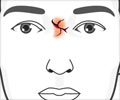The ultrasonic bone aspirator, which uses sound waves to remove bone without damage to surrounding soft tissue or mucous membranes, may be a useful tool for surgeons performing cosmetic rhinoplasty.

Jewel D. Greywoode, M.D., and Edmund A. Pribitkin, M.D., from the Thomas Jefferson University Hospital, Philadelphia, conducted a retrospective review of 103 consecutive patients who underwent cosmetic rhinoplasty at a tertiary care academic facial plastic surgery practice. The ultrasonic bone aspirator was used for conventional procedures and also in novel ways for further aesthetic refinement, such as addressing deformities and sculpting mobile bone fragments. Both cartilage treated with the device and untreated cartilage were evaluated by histologic (microscope) analysis for injury to tissue. Researchers documented patient and surgeon satisfaction as well as complications. Patients were followed up with at one week, one month, three months, six months and one year after the procedure. The mean (average) length of follow-up was 3.2 months, with a range of zero to 14.2 months.
The most common application of the ultrasonic bone aspirator was for smoothing of the nose's bony edges, which was performed in all patients. Outcomes were considered satisfactory for all patients. Minor complications occurred in seven patients (6.8 percent) treated with the ultrasonic bone aspirator. Injuries to skin and soft tissue were not experienced by any study participants.
The authors concluded that the ultrasonic bone aspirator could be a useful tool for surgeons performing cosmetic rhinoplasty. The device, they explain, allows precise, graded removal of bone without damage to surrounding soft tissue or mucous membranes; can be used for procedures such as refinement of subtle irregularities and asymmetry of the nasal bones; and does not seem to have a significant risk of complications. "Multiple applications in nasal surgery can be found," the authors write, "and although long-term results are lacking, the device's positive safety profile and early results warrant further use and investigation."
Source-Eurekalert















